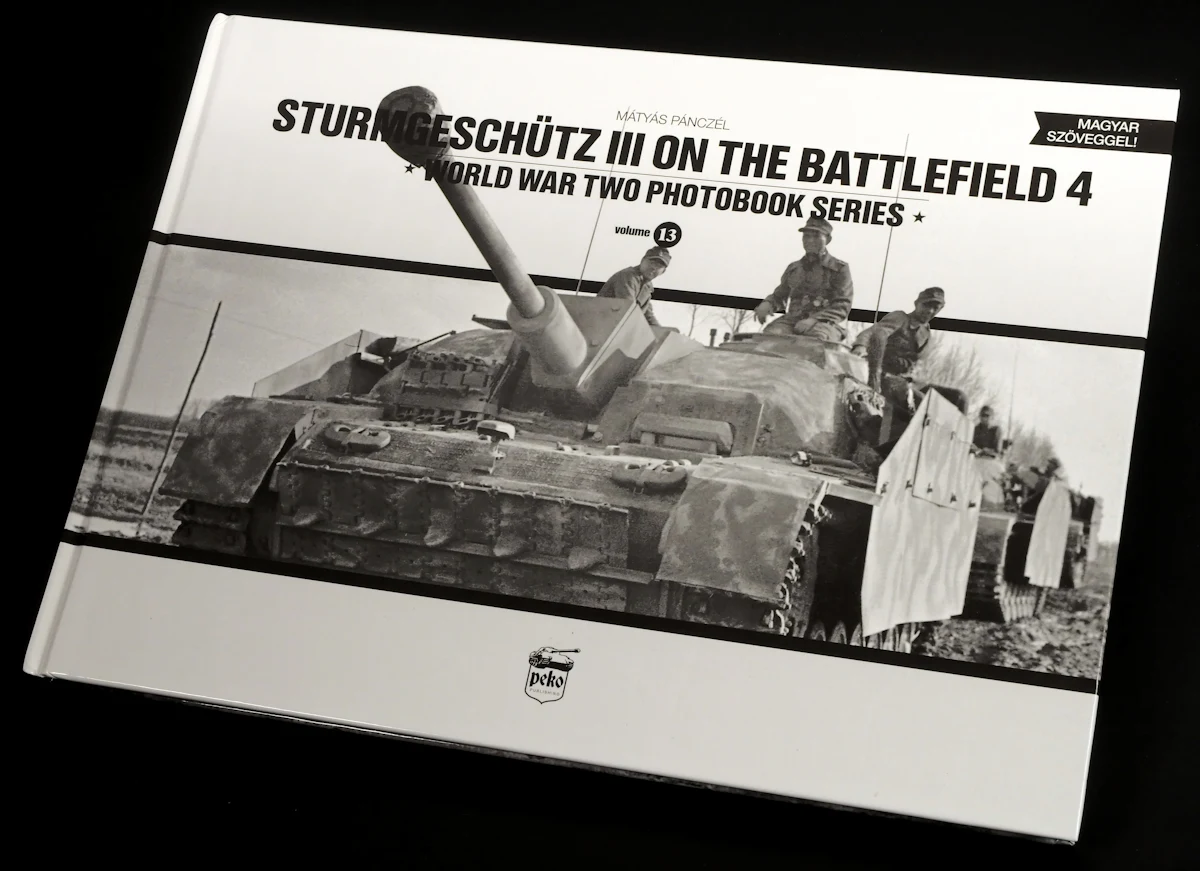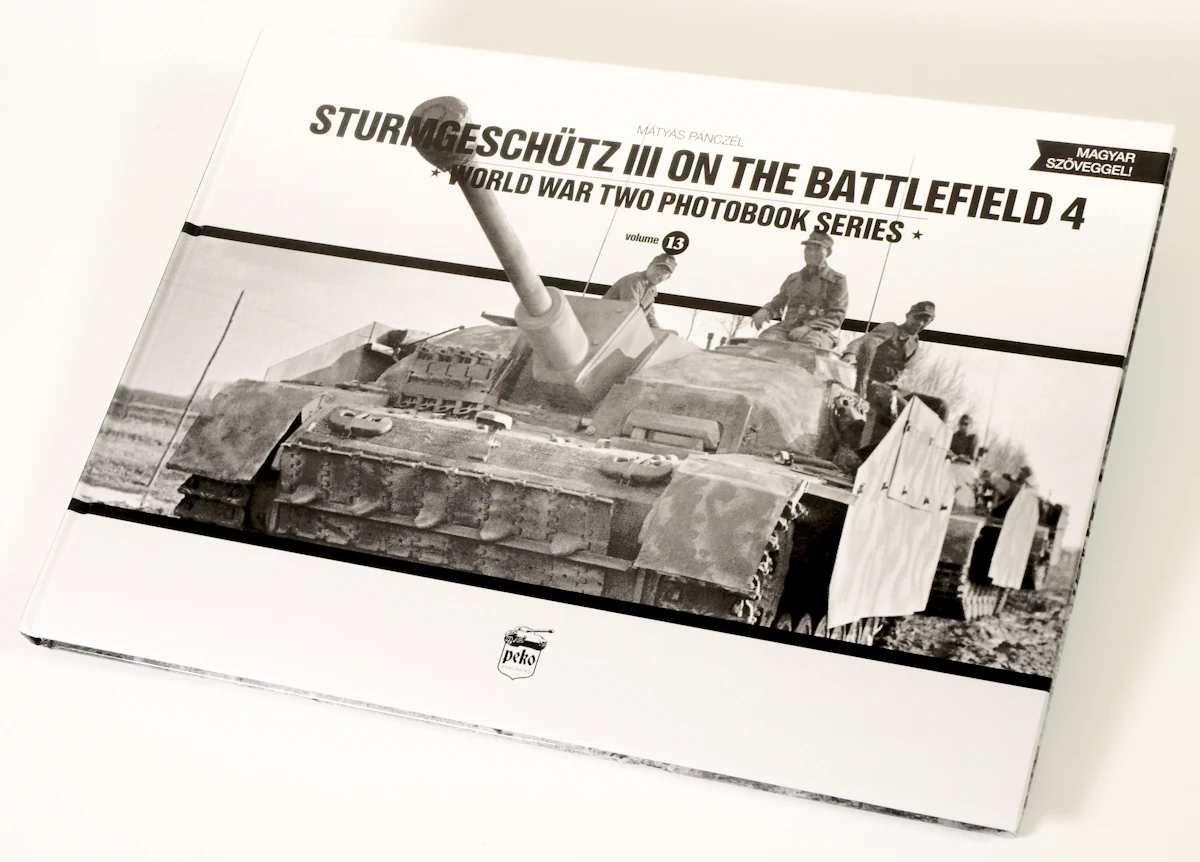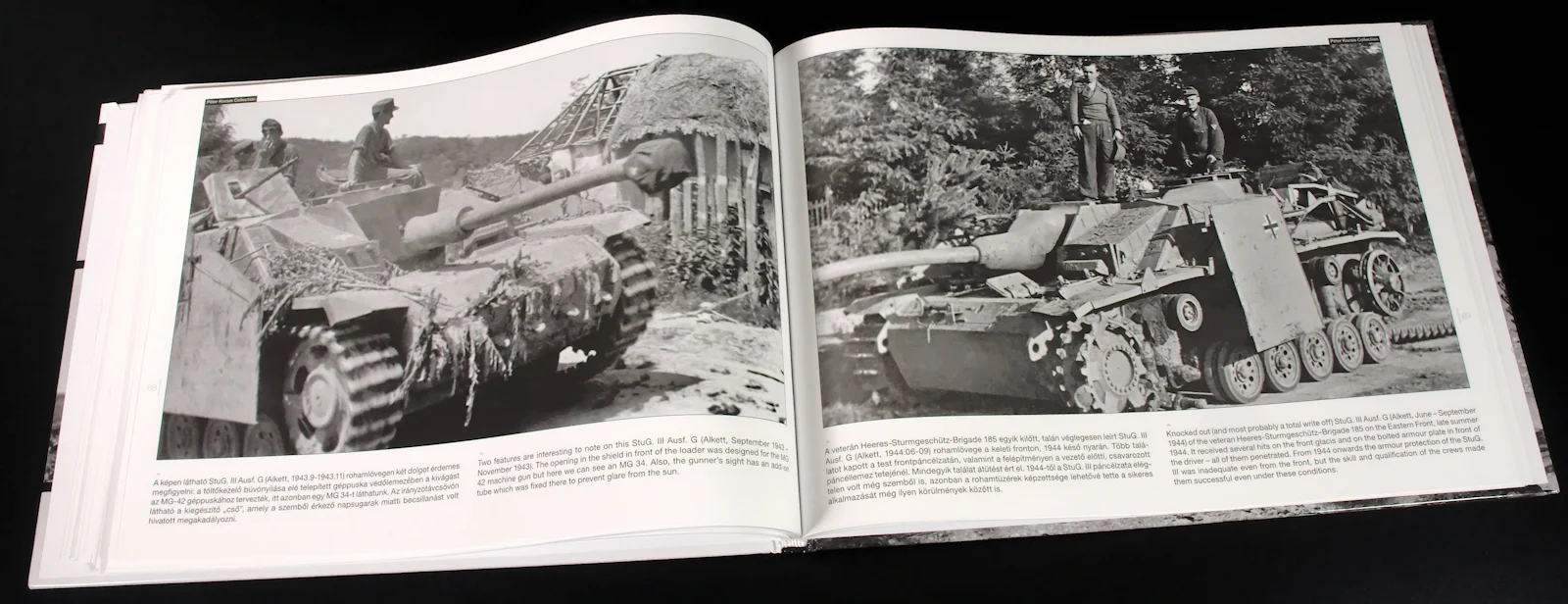We like the StuG III – but obviously not as much as the peeps at Peko Publishing, as this is the fourth book in the "On The Battlefield" series to feature this particular vehicle. Will it stand up to the quality of the others in this series? Well, we read it, and we thought we would take you through this latest issue so you can see what's inside.
Read n' Reviewed: Sturmgeschütz III on the Battlefield #4 - World War Two Photobook Series (Vol.13)
From: Peko Publishing
Author: Mátyás Pánczél
Language: English/Hungarian
No of Photos: 105
No of Pages: 112
Physical: Hardcover, 300mm x 215mm, landscape, hardcover format.
Weight 750g
ISBN 9786155583025
Price: €28.95
PeKo Publishing has already given us three complete books on the StuG III on the Battlefield. IT is always a challenge to bring out your first, then the effort for a second, and then a THIRD? But now – there are four, and the challenge is on to live up to the original premise of keeping it fresh with new and unpublished pictures of this vehicle. As it is a much produced AFV during the war we are living in hope of something new yet again.
In its physical form, we have the same format adopted again for this book as the other thirteen in this series. Again physically, this book is a hardcover, with a glossy finish in an A4 (11.6 x 8.3 x 0.5 inches) landscape layout. Each page of this book is also of a familiar but welcome format, the one-picture-to-a-page with a large photo format. The text at the bottom of these pictures is in English & Hungarian, and it is meant to help the reader find details about what they are looking at, the vehicle's manufacturer and where the vehicle was pictured.
This is the format we are very used too and again it worked well in this book, with the large format pictures in the landscape form make the pictures big so you can see the details in them at this larger size, and detail is a lot about what this book (and the rest of the series) is about. On each of the pictures, we also see a note about the company who made that particular tank and its period of manufacture which is helpful for modellers and amateur historians alike.
Let's look at this issue from front to back...
The author Mátyás Pánczél, has given us an introduction over two pages, in both English and Hungarian, this section of the book describes the different places these guns fought in this phases of 1943 till the end of the war, from the Italian peninsula to the Normandy to Berlin western front, to the Eastern front and then through to central Europe. Although in practice the book goes from 1940 through till late 1944. In this text section, he explains the differences in terrain, and the tactical advantages and disadvantages the Sturmgeschutz III faced in each. It gives you a good idea and blueprint of what is to come in the main section of the book.
We see the StuG III from 1940 through to 1945 in this volume, and we start with the Stug III Ausf B with the short barrel gun and work our way through the variants until the concrete covered StuH Ausf G at the end of the war. I like the way that you see one model in a section so the author can point out the little interesting facets of the model before moving on. It teaches you about each version a lot more efficiently than any other way I reckon.
We see lots of early war Ausf. B StuGs in this section of twenty odd pages, nearly all of them on the Russian front and in the many miles of advance during Operation Barbarossa and right up until 1941. The summer and winter phases are shown, with more fair weather pictures than snow covered tanks, and we see a LOT of broken down and beaten up tanks under repair and completely torn apart.
It is 1941 and we look at the Ausf C for just a few pages then on to the Ausf D next in a series a few of pages with large pics and dual text to show the differences, circumstances and interesting peculiarities of each. We quickly move on to 1942 with the longer barreled Ausf F models. We begin to see more of the varied camouflages and white distemper with a lot of extra stowage of the Eastern front in this section.
Sideskirts and some Zimmerit are shown off in the last of the nicer weather before we look at StuG's with more winter camo, snowy conditions and Ostketten on their running gear in the period till February 1943. We then go on to the summer campaign again, with StuG's in large flower fields before we move on to the StuG G – a period about half way through the book.
Through the sunnier climes in Russia in 1943, we are shown the differences to the StuG that made the Ausf G model. The G model is described in the difference between it and previous models, also the varied different idiosyncracies of each of the tanks in the pictures (and some int he background) are described by some helpful and interesting writing from the author. The pictures are great – with a lot of variance to the scenarios, much more than the early war pictures that featured mostly the advance, and the repair of the StuGs.
We are starting to see more captured variants now, with the Italian peninsula fighting came lots of Americans with cameras ready to capture a memory of a disabled Sturmgeschütz III before we go back to the Eastern front in late 1944 with a very interesting artistically painted tank, another with T-34 improvised armour and some concrete up-armoured vehicles.
1944 sees us in a mix of the Italian and eastern fronts. You can really tell the differences in the light, and the condition and characteristics of each tank. The author again takes us patiently through each and the differences and stand out features of the tanks. Each of these has some interesting points, and things you never knew about the tank as it changed and adapted to the front it was on and the technology employed by the Germans and their enemies.
The last twenty of so pages have much the same content – but still every picture tells a short story, from the waffle shaped Zimmerit to the improvised side plates that look like a Frankenstein jog, to the concrete armoured StuG that got a little too much concrete on it – there are so many variants and interesting subjects you would never know they all existed. Several full sized pictures of some pf the 177ths tanks near Villinus mark the end of the book.
And that brings me to the end of this review – the challenge was there in creating the fourth volume – and this book is just as good as any of the others that precede it. There are new pictures, packed with interesting facts and alterations, plenty of dio material and tank changes to feed many modeller's heads and lots of historically interesting pictures showing the vehicles, conditions and their crews through the war.
The only change I might have made was to break this book into more defined sections of fronts with each marque, but the author has pretty much done that here. Sometimes you have to guess where you are on the vast fronts of WWII.
All in all another great addition to this series Thirteen books in all, and no drop off in quality – top marks Peko!
Adam Norenberg
Thanks to PeKo Publishing for sending this book out to us to read and review. You can now order these books directly from the PeKo website which is great – they have a cart system now so no need to email, just add what you like to your cart and off you go.











